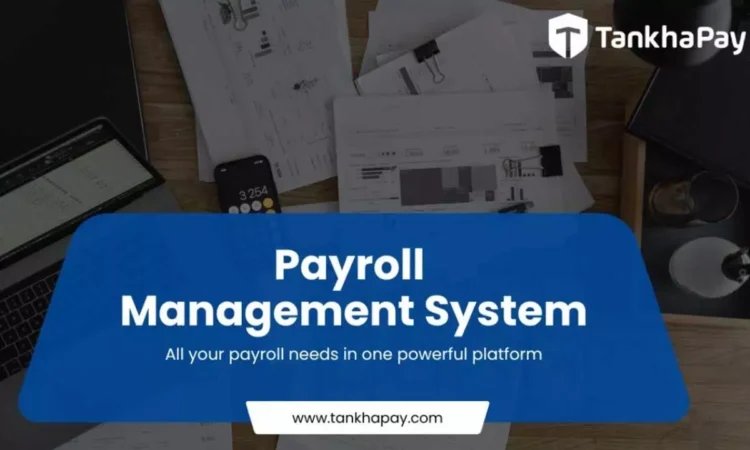In the current fast-paced business landscape, precise, prompt, and compliant payroll processing is crucial. Next-generation payroll management systems merge automation with cognitive analytics, employing AI-driven anomaly detection to uncover missing hours, duplicate entries, and pay discrepancies, thereby decreasing payroll errors by as much as 70%, as reported by LiftHCM. A comprehensive payroll management system facilitates salary calculations, reduces compliance risks, and bolsters employee trust. Machine learning enhances tax computations and reporting, while cloud-based solutions consolidate payroll, attendance, and compliance across various locations. These advancements provide real-time insights, expedite payroll cycles, and significantly lessen manual effort, allowing businesses to concentrate on growth.
Why Companies Are Embracing Payroll Management Systems Accurate Salary Calculations and Timely Disbursements A comprehensive payroll management system automates the entire salary process, covering gross wages to mandatory deductions such as PF, ESI, professional tax, and TDS, along with voluntary contributions like insurance and employee welfare schemes. By accurately calculating net pay and ensuring timely salary disbursements across different locations and employment types, companies can minimize payroll errors, enhance operational efficiency, and foster employee trust. Simplified Compliance with Labor and Tax Regulations Handling payroll in India necessitates strict compliance with labor laws and tax regulations. Payroll systems automatically manage statutory filings, deductions, and reporting, reducing the risk of penalties.
Companies can guarantee smooth compliance with EPFO, ESIC, and Income Tax laws while keeping precise records for audits and inspections. Improved Employee Access and Transparency Employee portals grant secure access to payslips, tax declarations, leave balances, and benefits. Detailed pay slips transparently outline gross pay, deductions, bonuses, allowances, and overtime, promoting trust and decreasing HR inquiries. Transparency in payroll also contributes to financial well-being, a critical factor for employee retention, according to Economic Times HRWorld. Decreased Errors and Boosted Efficiency Merging leave and attendance data with payroll systems minimizes manual entry and lowers the chances of errors. Real-time alerts inform HR teams of discrepancies, ensuring issues are resolved before payroll is finalized.
Automating repetitive tasks conserves time, enabling businesses to focus on strategic objectives rather than administrative tasks. Key Features of Payroll Management Systems Accurate and Transparent Payroll Payroll management systems simplify calculations from hours worked to net pay, applying all necessary statutory and voluntary deductions. Employees remain informed about their earnings and deductions, ensuring transparency and fostering confidence in payroll processes. Tax Management and Regulatory Compliance Payroll systems automatically calculate contributions for PF, ESI, professional tax, and TDS while ensuring adherence to all statutory obligations. Documentation of deductions, salary registers, and returns submitted to regulatory bodies are centralized for easy access and audit preparation.
Centralized Payroll Records Employee master data, attendance records, leave balances, bonuses, and tax declarations are securely stored, ensuring compliance and simplifying audits. Systems maintain detailed records for multiple years, meeting legal requirements and lessening administrative burdens. Comprehensive Pay Slips and Employee Statements Modern payroll systems produce accurate and detailed pay slips that encompass salary components, deductions, benefits, and identifiers such as PAN and Aadhaar. Employees can securely access these records, enhancing transparency, trust, and engagement.
Emerging Trends Shaping Payroll in India In line with Viksit Bharat by 2047, India’s ambition to become a global AI leader by harnessing advanced technology for economic development, governance, and societal advancement, next-generation payroll management systems are incorporating AI and cognitive analytics to modernize workforce operations. These platforms enhance payroll, attendance, and workforce management through biometric devices, facial recognition, and geolocation, while predictive analytics identify anomalies and streamline processes. Cloud-based, mobile-first solutions accommodate enterprises of all sizes, aligning with India’s technological and economic goals. TankhaPay’s Payroll Management System guarantees accuracy, compliance, and data security through sophisticated automation. Its integrated payroll software allows for precise salary processing, real-time error alerts, employee self-service, and secure record management.
For over 25 years, more than 1,000 Indian organizations have relied on TankhaPay to simplify payroll, reduce manual tasks, and foster business growth. Final Thoughts Today’s Payroll Software and HR Software in India extend beyond conventional salary processing to become essential business drivers. By automating payroll, ensuring comprehensive regulatory compliance, protecting employee records, and delivering transparent reporting, companies can reduce errors, optimize time, and enhance overall workforce engagement. Enhance your payroll operations with TankhaPay’s Payroll Management System. Request a demo to experience effortless, accurate, and compliant payroll management.
